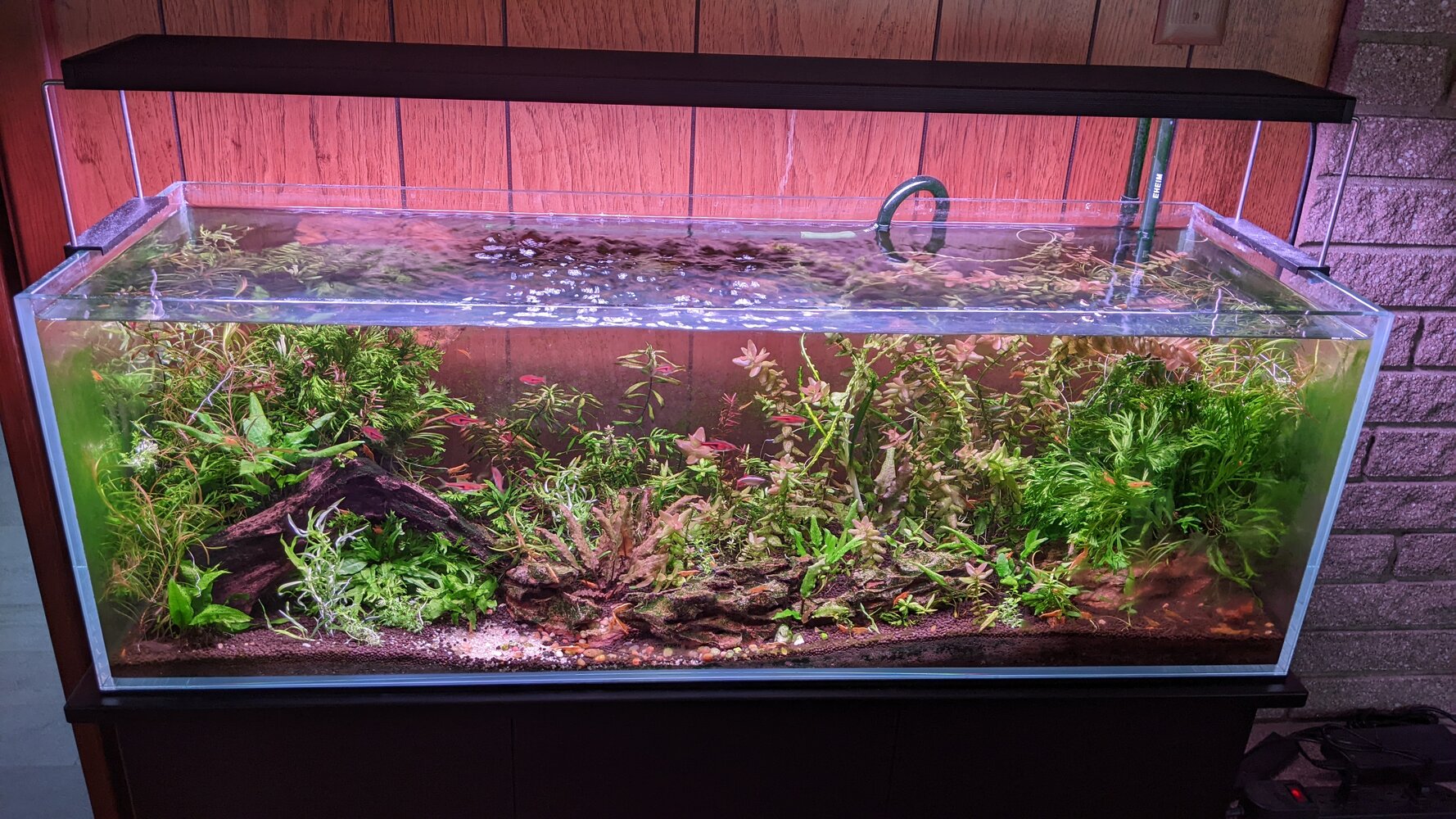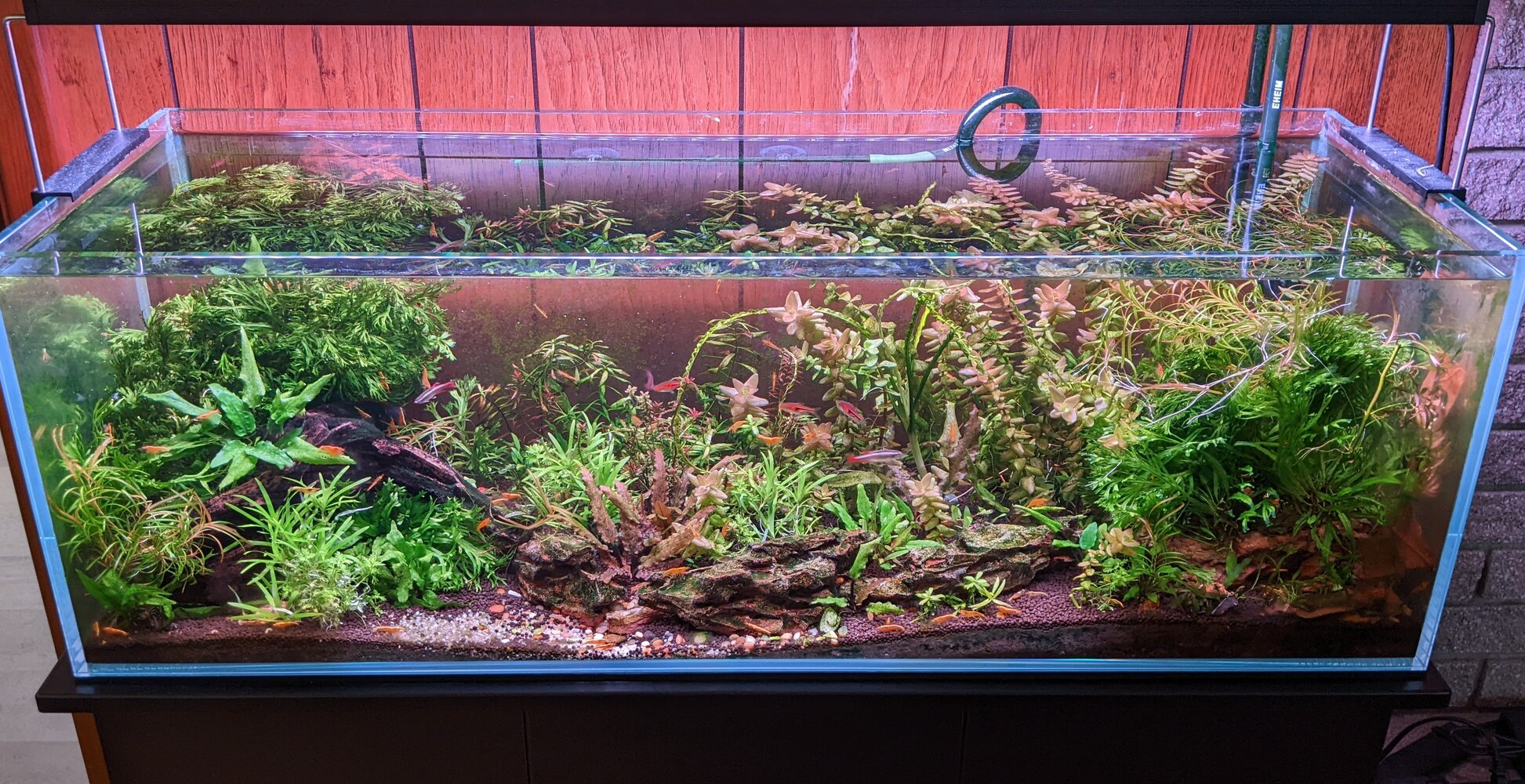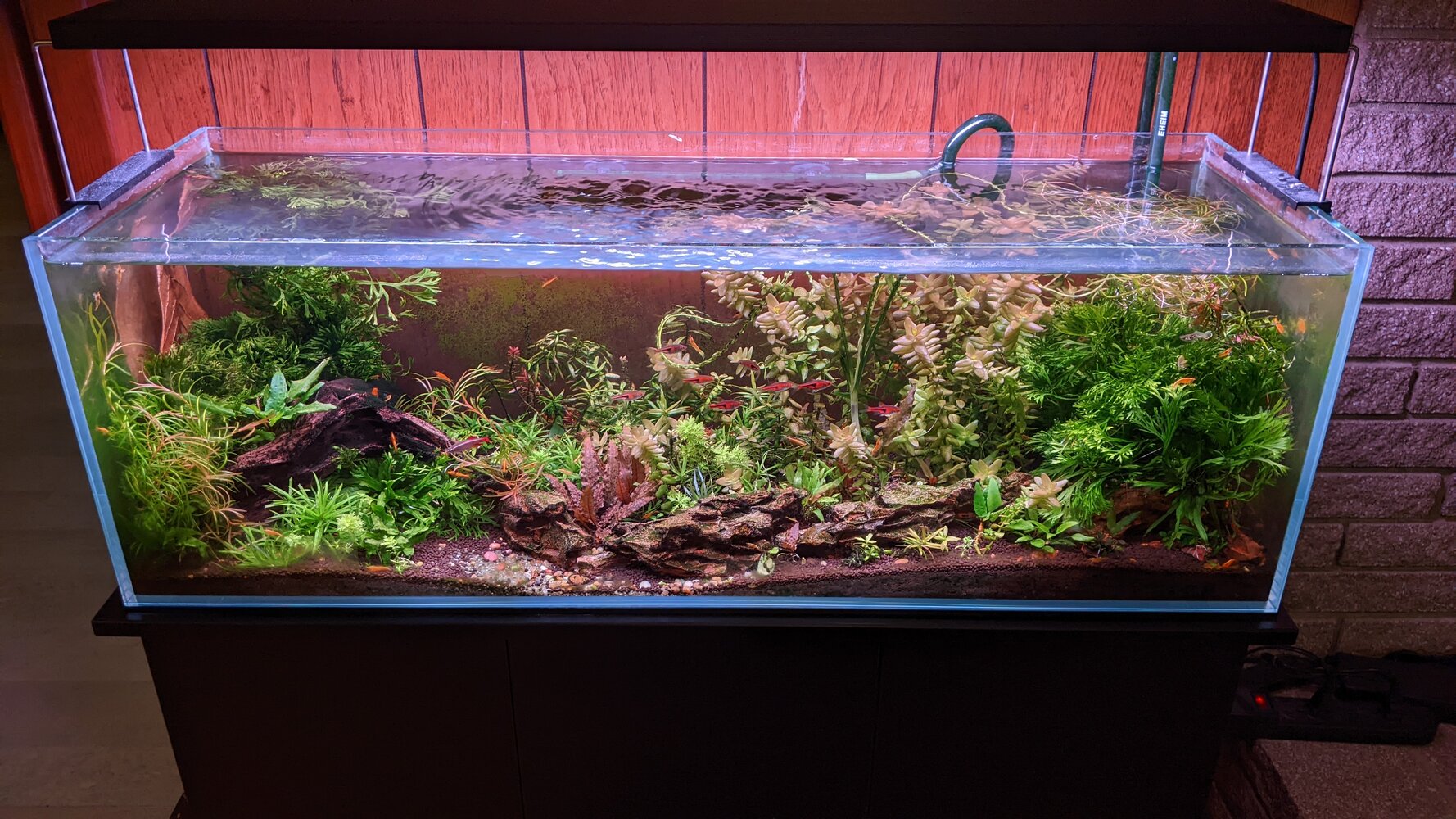Not much to report on this week, except I added a little EDDHA iron to my limed tanks and really underestimated the pink tinge! I was probably asking too much of my scale to measure out such a small amount anyway, so in the future I think I’m just going to eyeball it with the goal of adding some iron, but not enough to tint the water.
I should talk about the future of this aquarium though. The simple fact is that all three of my existing tanks are slated for destruction. Remember at the very beginning of this journal I talked about the 4’ tank build I was planning to do? That’s still where I’m headed, but after the last year I don’t feel comfortable adding it on top of everything else, so I’ve got to let stuff go in order have the bandwidth to take it on. I need all the plant material for the big tank anyway.
This bigger aquarium has gone through so many iterations in my head, but my current thinking is to focus on plants that are low maintenance do well for me rather than devoting significant space to stuff that struggles or needs me to fuss with it frequently. I still want to explore color and texture within this framework, and I feel like I’ve made good headway on that and have a lot of plant material to work with. I suspect that in the long term this is going to become a majority crypt tank, so I want to get a few more species/cultivars going so I have a lot of diversity in a year or two.
One major stumbling point on the project is I’m not totally decided about the substrate. I'm not as happy with aquasoil as I would have thought. Though it is easier to plant in, it’s not performed better than capped potting soil (which, for the record, I think is underrated!) and it looks terrible. I can’t get over how bad it looks. I really like the look of light sand, but I still don't have it in me to give up an active substrate all together. Also light sand on its own is also a maintenance problem anyway. I am considering the media bags with aquasoil under sand approach, but I’m still weighing my options.

















